Honda Civic 7th Gen Tuning
"All you need to know about performance parts and tuning the Honda Civic 7th Gen engine!"
In response to a query about how to tune and alter the Civic 7th Gen engine, we've put together this section to highlight the most important areas of improvement you can accomplish.
The Honda Civic 7th generation vehicles were offered between the years 2000 to 2005. If you own a vehicle from this era and are looking to upgrade it, here are some of the best options in this regard.
On this page, we'll take a look at Civic 7th Gen tuning and sum up the most popular upgrades. You may substantially improve your driving experience by installing performance equipment like ECU maps, turbo upgrades, and camshafts into a Honda Civic 7th Gen.
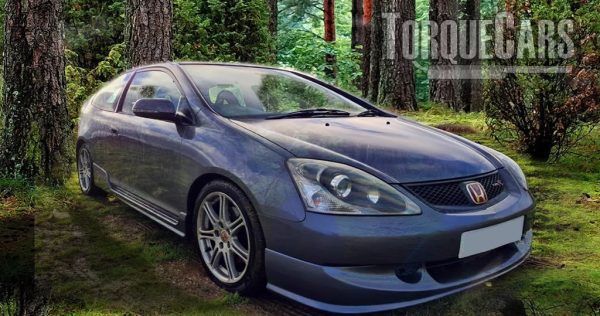
History of the Civic 7th Gen Engine
- 1.3 L LDA series I4 SOHC (Hybrid);
- 1.4 L D14Z6 I4;
- 1.5 L D15Y3 I4;
- 1.5 L D15Z6 I4;
- 1.6 L D16V1 I4;
- 1.6 L D16W7 I4;
- 1.6 L D16W9 I4;
- 1.7 L D17A1 I4;
- 1.7 L D17A6 I4;
- 1.7 L D17A2 VTEC LEV I4;
- 1.7 L CTDi turbo common rail diesel;
- 2.0 L K20A2 I4;
- 2.0 L K20A3 I4.
Engine swap options for the 7th Gen Civic.
K20A2, a pretty easy to swap bolt-in process. The shift linkage requires modifications but that's about it;
K24 which also proves to be a straight swap and similar to the K20A2, it will also need the shift linkage modification.
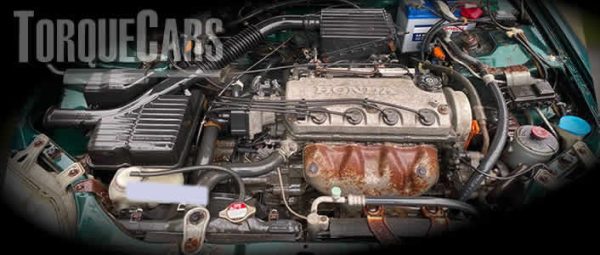
We have Civic tuning guides covering Civic 3rd Gen Mods, Civic 4th Gen Mods, Civic 5th Gen Mods, Civic 6th Gen Mods, Civic 7th Gen Mods, Civic 8th Gen Mods, Civic 9th Gen Mods, and Civic 10th Gen Mods
Tuning the Honda Civic 7th Gen and best Civic 7th Gen performance parts.
Best Civic 7th Gen tuning mods
When talking about the best modifications for your Civic 7th Gen engine, we are going to focus on the ones that provide the best power gain for your money.
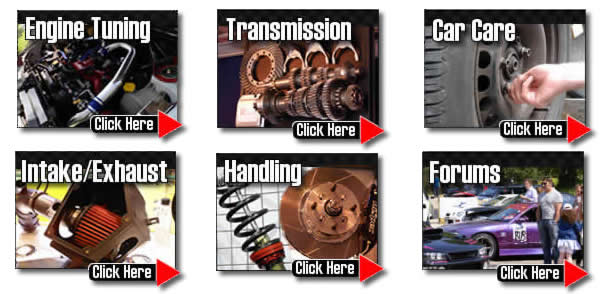
Check out our video introduction to Honda Civic Tuning, all you need to know and full guide.
Best mods for your Civic 7th Gen
- Flowing and porting the engine head - for larger gains, you will get better flow and make a more efficient engine if you do this to support your other mods.
- Brake Mods - Improve your ability to stop ought to be high on your agenda.
- Intake Modifications and Performance Exhausts - NB: on their own these mods won't ADD POWER on most cars, but they can help enhance power after other upgrades by removing the restriction.
- Lightened Flywheels - a lighter flywheel will noticably improve the engines free revving nature. Not a great mod for all Civic 7th Gen engines.
- Civic 7th Gen Suspension Tuning - Fitting a suspension kit dramatically improves Civic 7th Gen handling Poly Bushes and Coilovers are typically fitted to achieve this
- Tunes - A remap with Hondata or K tune provides the most power for your outlay, aftermarket ECU upgrades, and piggyback ECUs are all alternatives.
- Turbocharger Upgrades - A New Turbo is the most significant way to increase air supply, which permits you to combust more fuel and make better power figures. It is one of the most expensive upgrades but provides the best gains.
- Sporty Profile Camshafts are are often the best upgrade for an engine, but they must be applied to your engine by someone competent and it is often hard to find a suitable cam near you but we are sure you'l; find a local firm to regrind a stock cam .
Civic 7th Gen Tuning Stages
Typical stage 1 mods often include: Panel air filters, Remaps/piggy back ECU, Fast road camshaft, Drilled & smoothed airbox, Intake manifolds, Sports exhaust manifold.
Typical stage 2 mods often include: fuel pump upgrades, Suspension (Sports), Fast road cam, induction kit, Ported and polished head, Sports catalyst & performance exhaust.
Typical stage 3 mods often include: Engine balancing & blueprinting, Crank and Piston upgrades to alter compression, Twin charging conversions, Adding or Upgrading forced induction (turbo/supercharger), Internal engine upgrades (head flowing porting/bigger valves), Competition cam.
7th Gen Civic Brake Upgrades
Making a car go fast is nothing if you can’t control the vehicle at such high speeds. High-performance braking parts are thus vital as they aid in putting the vehicle under the driver’s control. Putting meatier brake discs and better brake pads will make for dramatically enhanced stopping.
Note that some performance pads can be noisier and will need to be hot before they start to work.
In every day driving the brakes are occasionally used so won't be all that effective so choose pads which work well in daily use.
When it comes to braking upgrades, several options are available which include:
Brake Kits
Brake kits are one of the easiest and most effective ways of improving the stopping power of your vehicle.
Here are some of the superior quality braking kit options of the Honda Civic 7th generation vehicles:
- StopTech Big Brake Kit for $2100;
- Power Stop 1-Click Street Warrior Z26 Drilled & Slotted Front Brake Kit which costs between $150 and $260.
Brake Pads
If you choose to get brake pads separately, you can choose from one of the following parts:
- Hawk High-Performance Street HPS 5.0 Brake Pads for $90;
- EBC Redstuff Ceramic Low Dust Front Brake Pads for $115;
- Akebono Performance Ultra-Premium Ceramic Front Brake Pads for $60.
Brake Rotors
Choose one of the following brake rotors if you want impressive stopping distances:
Power Stop Double Drilled & Slotted Brake Rotors for $150;
EBC USR BlackDash Series Sport Slotted 1-Piece Brake Rotors for $145.
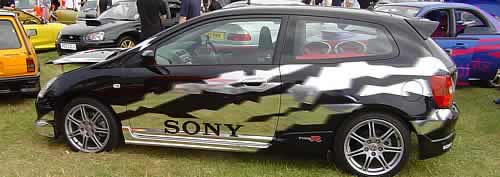
Civic 7th Gen Handling/Suspension Upgrades
Upgrades to the Civic 7th Gen's suspension and handling
When it comes to modding your Civic 7th Gen, one of the most often aims and objectives in a tuning project is to better its handling.
As suspension plays a key role in determining the ride quality and handling of your vehicle, we recommend that you consider the following suspension upgrades for your Honda Civic 7th generation vehicle.
Nothing gives you more control over height adjustment than coilovers which permit you to set a ride hight and this allows you to setup your handling. These parts are relatively expensive but the performance they deliver is unmatched.
Is there anything I should keep in mind while deciding on suspension upgrades for my Civic 7th Gen?
Springs
The following spring options are the best for your Honda Civic 7th generation vehicle: H&R Sport Spring Kit costing around $220;
- TruHart Front & Rear Lowering Coil Springs for $150;
- Tein S-Tech Front & Rear Lowering Coil Springs for $230.
Sway bars
Sway bars are ideal for removing body roll. They help in providing better handling and thus aid in cornering. If you are interested in fitting a sway bar to your Honda Civic 7th generation vehicle, you can choose from the following parts:
- Eibach Sway bar kit for $380;
- Nolathane sway bar for $150.
Coilovers
Nothing gives you more control over height adjustment than coilovers. These parts are relatively expensive but the performance they deliver is unmatched. That’s why we recommend that you install coilovers from one of the following brands on your vehicle.
- KW V1 & V2 Coilovers costing between $1450 and $1900;
- Skunk2 Pro-ST Front & Rear Coilover kit for $980;
- Godspeed Project Mono-SS Front & Rear Coilover kit for $650.
Upgrading your Bushes
Enhancements to the bushings: Things you need to know
Bushings, which are rubber mounts, allow the Civic 7th Gen's suspension components to be affixed to the car's chassis. The rubber ones will lose their shape as they wear out.
New OEM rubber bushings may have a major impact on the performance of your vehicle.
Because polyurethane bushings are stiffer, the ride may be less forgiving, but the bushings will last longer and maintain the car's handling over a longer time.
They may also lead to an increase in the decay of other suspension parts due to the increased vibration and play.
With a new set of poly bushes, the excessive play associated with rubber bushings may be reducde.
You may struggle to find a full set of polyeyurothane bushings, but most regions have the primary mounts available. Custom polyeyurothane bushes are often made to your requirements.
Many people believe that a 60mm lower Civic 7th Gen suspension kit from a car part store would be perfrect. However, this is not the case - suspension design and setup is quite complex.
Claims are often made that all Civic 7th Gen models and years may be able to utilise the same suspension kits sold by vendors.
For a vast variety of vehicles, a 'generic one set for all models' approach is obviously incorrect.
How low should you go on the Civic 7th Gen?
According to TorqueCars research and testing, the maximum amount of suspension drop for most road vehicles is 29 - 44 millimetres, whereas versions that come with lowered sporty suspension already have a maximum suspension drop of 22 millimetres.
These tolerances may be drastically lowered if the wheel size is changed. Even with 17" wheels and stock suspension, lowering the vehicle might result in a slew of issues.
Civic 7th Gen Camshaft Upgrades
Performance camshafts raise the top end power which makes it a best mod for NASP and turbo petrol engines, but not so much on diesels. You will usually get a top end power hikes through performance camshafts on most engines.
If you have VTEC, you can set it to cut in at lower RPM ranges, giving you a sportier cam profile over more of the engine's power band.
It is simpler to get VTEC to come in sooner than it is to find and install a fast road cam, therefore this is our preferred choice for people wishing to improve the cam profile on their Civic.
Significant gains on the Civic 7th Gen can be made from cam upgrades. Altering the cam profile alters the intake and exhaust durations on the engine and can dramatically change the engines power and power output.
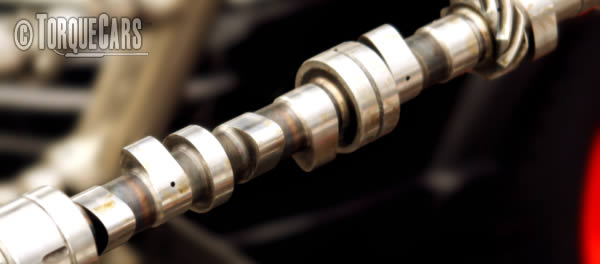
Fast road cams normally bump the power through the rpm band, you might lose a little low end bhp but high end rpm power will improve.
Competition cams, bump the high end rpm power band but as a result the car will not idle smoothly and low end power nearly always suffers.
A Competition cam is not great in heavy traffic.
You should ideally match your bhp range to your preferences so for a car used daily stick with a shorter duration Civic 7th Gen cam
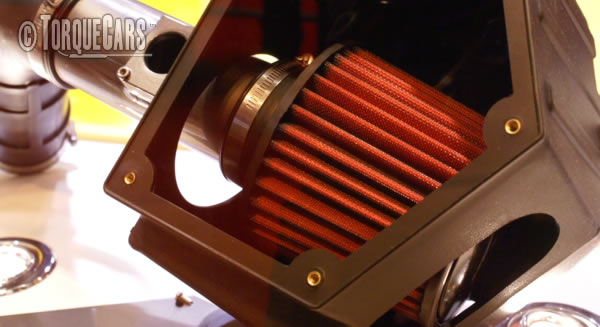
Some Civic 7th Gen engines respond differently primarily due to the airflow when cams are fitted depending on the cam being more aggressive cam durations and cam duration as unique due to manufacturing tolerances and quality variations so check your engine on a rolling road.
The ECU mapping and fuel delivery and fuel pump and injectors also have an effect on the torque gains you'll get.
A longer valve duration can adjust the torque curve, and on most engines there are some advantages to extending the intake or exhaust durations and valve lift.
ECU Mapping Improvements for the Civic 7th Gen
Remaps helps release the full potential of all the mods you've fitted to your Civic 7th Gen.
Hondata offers the option of reflashing your 7th generation Honda Civic Si. This costs around $300 and increases the vehicle’s power by 10 to 12 horsepower. The 0 to 60 mph time can thus be lowered by up to a second.
However, after reflashing, you will have to use high octane (US: Octane 91 / UK: 97RoN) fuel for your vehicle.
(Flashing the ECU is not an option for many engines and years of Honda in certain regions and areas, so an aftermarket ECU is the route to take, and most of these exceed the specs and performance of your factory ECU's but check it has knock protection and that you get it setup properly.)
It will usually give around 30% more power on turbocharged vehicles and you can expect to see around 15% on NA (naturally aspirated) engines, but your results often depend much on the mods you've done and the condition of your engine.
Air Flow improvements on the Civic 7th Gen
It is the whole point to any car tuning project to force more fuel and air into your Civic 7th Gen.
Air intake systems are some of the most commonly upgraded parts of vehicles. The Honda Civic 7th generation is no exception.
We recommend going for the K&N 57 Series FIPK Generation II High-Density Polyethylene Cold Air Intake System. The part can boost up to 5 horsepower and 4 lb-ft of torque. It costs around $330 and delivers great value for money.
The best thing about this part is that it does not require any service for at least 100,000 miles and thus you can just install it and enjoy superior performance.
Another great option for increasing the power of your car is by replacing the standard air filters with less restrictive performance air filters.
You can choose from the following options:
- Spectre Performance HPR Panel Air Filter which costs around $30;
- HPS Silicon Hoses Round Tapered Air Filter with a price tag of around $60;
- aFE Magnum Flow Pro 5R Round Tapered Air Filter for $65.
An intake manifold will channel the air during the suck phase from the filter and allow it to be fed into the engine and mixed with fuel.
Design and flow characteristics of the Intake manifolds can make a big improvement to fuel mixing and power on the Civic 7th Gen.
It's not uncommon that plenum chambers are in desperate need of an upgrade, although a few OEM provide decently flowing plenum chambers.
Increasing valve sizes on Civic 7th Gen, getting port work and head flowing will also lift bhp, this will allow you to get raising the bhp increase on other upgrades.
Civic 7th Gen Turbo upgrades
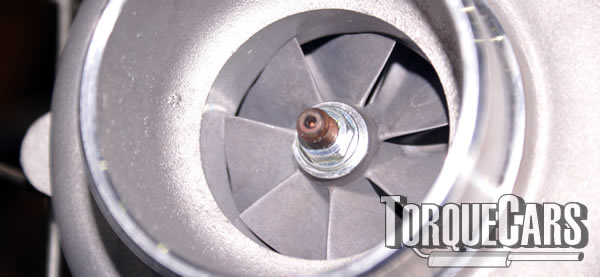
NA (naturally aspirated) engines need quite a lot of work when you add a turbo, so we have a separate guide to help you take into account the pros and cons of going this route on your Civic 7th Gen
The more air you can get into an engine, the more fuel it can burn and uprating the induction with a turbocharger upgrade makes massive power gains.
A turbocharger is a sure-shot way of getting the most performance out of your vehicle.
The BorgWarner AirWerks S400SX Super Core Turbocharger having part number 179352 works best for the Honda Civic 7th generation because of its universal fitting.
It costs around $1150 but when you consider the performance boost that you get with this part, the price seems justified.
There are weak spots for every engine, with some being very over engineered and some just sufficiently able to handle stock power. Research these limits and upgrade to higher quality crank and pistons to utilize the power.
It's not unheard of mechanics spending a fortune on turbo charger upgrades on the Civic 7th Gen only to see the engine throw a rod soon after it's used on the roads.
Big turbos tend to experience no power at low rpm, and low capacity turbos spool up quickly but do not have the top end bhp gains.
We are pleased that the selection of turbo units is always improving and we now see variable vane turbo units, permitting the vane angle is altered according to speed to lower lag and increase top end torque.
Twin scroll turbo units divert the exhaust flow into a couple of channels and flow these at differently angled vanes in the turbo charger. They also help the scavenging effect of the engine.
It is not unusual that there is a restriction in the air flow sensor MAP/MAF/AFM on the Civic 7th Gen when considerably more air is being drawn into the engine.
We note 4 bar air sensors coping with quite large power gains, whereas the OEM air sensor limited power at a much lower level.
Adding a supercharger or additional turbo will make large bhp gains, although more challenging to install. We have this guide to twinchargers if you want to read more.
Boost Controllers
We recommend using the following boost controllers for the Honda Civic 7th generation:
AEM Tru-Boost Boost Controller that costs $340;
GReddy Profec Electronic Boost Controller for $400.
Intercoolers
An intercooler is another performance-focused part of your Honda Civic 7th generation vehicle.
It ensures that the engine continuously gets cold and dense air which is rich in oxygen. This air guarantees higher combustion rates and thus more power.
The GReddy intercooler kit that costs around $750 is one of the best options in this regard.
However, if you don’t want to spend this much on the intercooler, try the Mishimoto universal intercooler which can be had for around $180.
Civic 7th Gen Alloy wheel upgrades.
The benefits of alloy wheels include reducing your unsprung weight and better brake cooling. We can't go into too much detail here about tires but they are how the car puts the power down on the road so are a critical choice. soft compound tires work well on Civic 7th Gen, and make a big difference over budget tires. The drawback to large rims on your Civic 7th Gen is that you alter your effective final drive ratio and this will have a detrimental effect on performance and acceleration.
Due to this fact try to keep the overall rolling diameter of the wheel the recommended OEM sizes. In all cases without going over 16 inches.
After all the performance modifications and upgrades that you’ve performed on your vehicle, you will definitely want your vehicle to look great.
Wheels play an important role in determining the looks of your car. Here are some of the manufacturers that offer wheels that fit on your Honda Civic 7th generation vehicle:
- SSR;
- Vossen;
- MRR;
- BC Forged;
- Enkei.
Civic 7th Gen Fuelling Upgrades
Don't miss you'll need to ramp up the fuel system when you are increasing the performance - it makes the car more thirsty. Performance fuel pressure regulators can offer improved throttle response.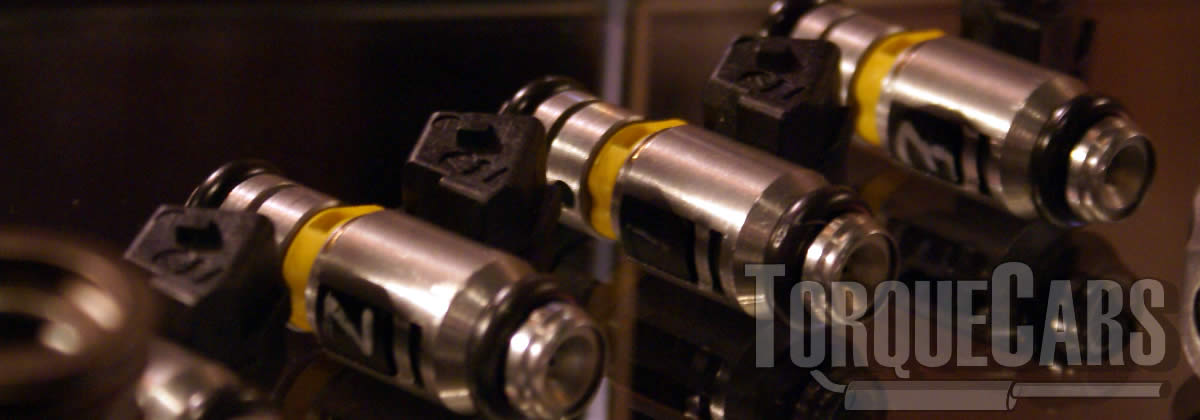 We would recommend you to be generous with your injectors flow rate.
We would recommend you to be generous with your injectors flow rate.
Fuel is the lifeblood of any vehicle. Without a proper fuel delivery mechanism, no matter how much money you spend on the car’s intake system, it will be of no use.
Here are a few fuel delivery upgrade options that will help you in getting performance gain.
- DeatschWerks Fuel Injectors costing around $320;
- DeatschWerks High Flow Fuel Pump costing around $105;
- AEM Adjustable Fuel Pressure Regulator that costs $135.
The rule of thumb is to add 20% capacity when buying an injector, this allows for injector deterioration and affords some spare capacity should the engine need more fuel.
We think this one is common sense, but you'll need to match your fuel injector to the type of fuel your car uses as well.
Civic 7th Gen Performance Exhausts
If the current exhaust is producing a flow issue, you really need to upgrade your exhaust.
Not many people know this but exhaust also plays a vital role in increasing the performance of vehicles.
Other than enhanced performance, the exhaust also aids in providing a sportier feeling to vehicles by giving them an aggressive sound.
Even with small power improvements, the exhaust flow rate on most factory exhausts should be enough. However, when power levels rise, you'll need a better-flowing exhaust.
Be aware that a wider exhaust may lower the exhaust flow rate, therefore go for a narrower exhaust if you want to gain more power. More important than hole size are the object's form and substance.
A sports catalyst may effectively eliminate this constraint, mainly owing to its higher size and surface area, and enhance the performance to levels you would anticipate without having a catalyst put on your road-going vehicle.
Here are some of the options that you have when it comes to upgrading the exhaust of your Honda Civic 7th generation vehicle:
- MagnaFlow Street Series Stainless Steel Cat-Back Exhaust System for $680;
- HKS Hi-Power Series 304 SS Rear Section Exhaust System With Single Rear Exit for $350;
- Vibrant Performance Streetpower 304 SS Oval Black Exhaust Muffler.
As a result of the increased interior surface area and the revised design, the vehicle remains road legal. Since removing a catalyst from a road-registered vehicle is prohibited in many places (and you can't even replace a functional catalyst in others), the alternative decat or cat removal should only be used on off-road vehicles.
Weak spots, Issues & problem areas on the Civic 7th Gen
The Civic 7th Gen engines are fairly reliable as long as they are looked after and serviced.
The 2001 and 2002 models were especially prone to transmission failures. By comparison, the 2001 Civic was ranked by Car Complaints as the worst model year, and usual dip in the quality of Honda but is thankfully behind us now.
When the Honda Civic 7th Generation Hybrid was originally introduced, it had battery problems that persisted.
Carbon build up in the head, particularly around the valves which will reduce power and smooth running, this is a very common problem on direct injection engines but should be looked out for on all engines. We have tips on removing carbon By avoiding short journeys where the engine doesn't warm up and using good quality fuel you can reduce this risk.
Regular oil changes are essential on the Civic 7th Gen, and more so when the car is modified and will help extend the life and reliability of the engine.
To find out more about mods and upgrades, or just get more pointers on Tuning your Civic 7th Gen engine please join us in our friendly forum where you can discuss Civic 7th Gen tuning options in more detail with our Civic 7th Gen owners. It would also be worth reading our unbiased Honda tuning articles to get insights into each modification and how effective they will be.
Please help us improve these tips by sending us your feedback in the comments box below.
We appreciate people taking the time to tell us what our visitors have got up to and which upgrades work best for them on each model of car. We use your comments and feedback to improve the accuracy of these Civic 7th Gen tuning guides which get regular updates and revisions.
Please Check out my YouTube channel, we're regularly adding new content...
PLEASE HELP: I NEED YOUR DONATIONS TO COVER THE COSTS OF RUNNING THIS SITE AND KEEP IT RUNNING. I do not charge you to access this website and it saves most TorqueCars readers $100's each year - but we are NON PROFIT and not even covering our costs. To keep us running PLEASE Donate here
If you liked this page please share it with your friends, drop a link to it in your favourite forum or use the bookmarking options to save it to your social media profile.
Feedback - What do You Think?
Please use our forums if you wish to ask a tuning question, and please note we do not sell parts or services, we are just an online magazine.
Help us improve, leave a suggestion or tip
Please watch this video and subscribe to my YouTube channel.

 Click to accept YouTube Cookies & Play.
Click to accept YouTube Cookies & Play.